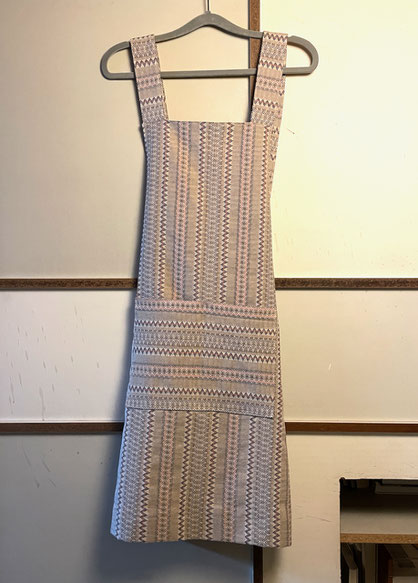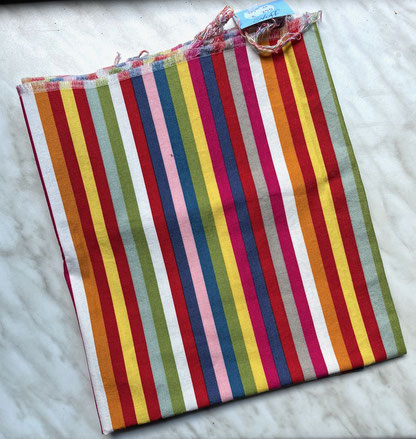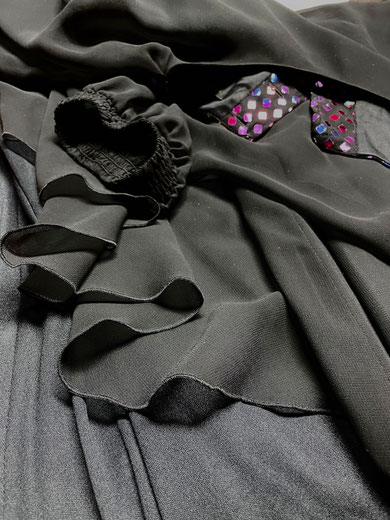
Welcome to Fashionrevolutionweek 2023!
As a fashion rebel, I try to take inventory of how green my wardrobe has become every year.
Normally I would like to write this sustainability review in January or February, but this year a lot of things got in the way and so I am using this year's Fashion Revolution Week to reflect on the behaviour of my clothing and fabric consumption.
My sustainability report fits in very well with this theme, because it's all about: how consciously, sustainably and socially responsible do we treat our environment, our fellow human beings, especially those who make our clothes and our clothes themselves?
Fashion Revolution Week takes place every year around 24th of April because on this date in 2013, a building called Rana Plaza collapsed in Bangladesh, killing over 1000 garment workers and leaving thousands more severely injured and traumatised. They were forced to work in the building even though it was known to be in danger of collapsing.
A terrible event that harmed the people who were already suffering from low wages and difficult working conditions.
Since then, there have been many associations and initiatives under the term Fashionrevolution, which campaign for the improvement of working conditions in the textile industry. Since 2013, these initiatives have been demanding that especially the big fashion companies pay attention to environmental protection, sustainability and fair wages and working conditions in their supply chains!
Of course, this costs more money and these corporations don't want to pay that, because it would minimise their profits. Then they prefer to make the profit at the expense of the textile workers and the environment and the quality of the textiles from which our clothes are made. And they produce so much of it that most of the clothes can hardly be worn and at best end up in resale, i.e. second hand, but mostly they are of such poor quality that they can only be burnt.
I know I'm getting a bit upset, but it has to be said again and again, because in the last 10 years the awareness of these problems has grown, but the will to act has not.
I always try to raise awareness with these blog posts and my posts on Insta and FB. There are also some petitions you can sign. Especially during fashion week! I do this so that I don't feel so helpless and powerless in all this madness.
Because what can we do as consumers?
The late English fashion designer Vivienne Westwood put it very well in a nutshell
#buylesschoosewellmakeitlast
i.e. buy less, choose quality, use it as long as possible
I therefore hope that my sustainability balance 2022 on my way to a green wardrobe will inspire you to take a closer look at your fabric and clothing consumption.

Since I've already annoyed you with a lot of writing, I'm going to make my balance sheet relatively straightforward.
I have divided my sustainability balance into six categories and sorted them by environmental friendliness.
I'll start with the most sustainable category:
1. Use what I have.
How often have I worn the things I made myself and the clothes I bought in 2022 so far?



In the photos are just three examples of things I bought or sewed last year.
They have been worn very often and I will definitely wear them for another season.
I will list all other garments from 2022 in the corresponding categories and write how regularly I throw them on.
On to the next category:
2. Swap/Borrow
Here, in 2021, I've noticed that I haven't exchanged or borrowed much, except for fabrics.
Borrowing fabrics is kind of weird, but borrowing clothes is actually a great thing. Especially for special occasions.
Last year, I finally tried out a second-hand clothing rental shop. In Berlin-Kreuzberg there is a shop called Kleiderei, which I find quite interesting. I had a good look in the changing room, but unfortunately I didn't find anything suitable.
In the first picture of this article, I spotted the blue designer dress by Pierre Balmain. But that doesn't really suit me!
But I really liked the black blouse, see picture below. Unfortunately it was a bit too tight for me. I'll have to sew one myself sometime. Luckily I can do that!

3. Upcycling/Recycling
This is one of my favourite categories. Upcycling or recycling is where two passions come together for me.
Sewing and the sustainable use of clothing/textiles.
For example, I like to make new clothes out of old bed linen or curtains.
Or I use curtain fabric like in the next photo to try out for a kimono jacket I want to make for my sister-in-law.

Sometimes it doesn't take much to turn a very, very, very well worn garment with heavy wear at the elbows into a presentable garment, see next photos.
My husband, who loves to wear his clothes until they fall off his body, was so happy!


4. Do it yourself

Every year I have the feeling that I don't have enough time to sew clothes for myself. But my balance sheet for the last year is not bad at all.
In the meantime, conscious sewing has also become part of building a sustainable wardrobe. I think about what new clothes I really need and what I can/might want to make myself.
Because it takes some time, even if it's just an ordinary t-shirt.
I also want to sew things that look good on me and that I can combine well with existing garments.
That's why I now make a sewing plan for my sewing projects and try to cut down on fabric or only buy fabric that I need for a specific sewing project. I have enough fabrics in stock anyway, but sometimes I don't find the right one... :-)!
But just shopping for fabrics is now taboo for me!

In the gallery above you can see
1 play rug, which I gave to my great niece
1 summer bag, sewn from a tried and tested pattern
1 shirt, which I already showed you under the 1st category
2 blouses, that unfortunately don't fit
I also sewed these other pieces:
1 pair of black summer trousers in two different fabrics
1 sample piece for a kimono jacket s. Category 3
These things are all made from fabrics from my stash. I've been busy reducing the amount of fabric.
Except for the blouses (sample pieces), I have worn all the other garments regularly.
I had to buy new fabric for the apron in the next photo.

I've ticked off the things I've already sewn on the sewing plan, but as you can see, there's still plenty on there for this year.
The dress made of palm tree fabric has just been cut to size on the table.
5. Buy Second-hand.
This is a bit embarrassing, but I have to confess that I bought a small piece of fabric at a flea market in Berlin.
It was so nice and colourful, but I don't really need it. Well, nobody is perfect.

Oh, I almost forgot. That's not the only fabric I bought second-hand!
Here are a few second-hand clothes from a kilo sale.
You can't see it, but in the photo there are two cocktail dresses that I want to make into blouses that will look like the blouse from the dress shop s.photo under category swap/borrow. I liked the cut very much.

And in the same kilo sale I picked up these linen shirts. I want to patchwork a pair of loose summer trousers out of them. I'm really curious to see how that works out. The shades harmonise quite well, don't they?

6. Buy New
This is the least sustainable category.
I now really only buy things that I need and where I know I will wear them often. I pay a lot of attention to quality and try to avoid plastics in textiles.
What I don't manage so well yet is to buy only from eco-fair suppliers. The things are often too expensive for my wallet and I always have to drive 120 km from my small village in Brandenburg to the big city Berlin.
I don't like shopping online because I don't like returning clothes that don't fit. It's not a very sustainable way to shop.
I have two shops where I know I can get good quality for a good price and I hope that the things are sewn by people who were not exploited for it, but I don't know exactly. Sucks!
So here's the list of clothes I bought that weren't eco-fair:
1 pair of green summer trousers s. photo under cat. 1
1 dark blue shorts s. cat. 1
1 black t-shirt dress
1 nightgown
2 corduroy trousers
1 pair of jeans
1 fan sweat jacket
1 red rain poncho
I don't really like to sew my own trousers, so I had to do it again this year. As I get older, the belly/upper area grows a bit, unfortunately. Although I always eat the same amount ;-)
And sometimes you can't sew as fast as you need things.
I vow to do better!!!
At least I try not to shop just to pass the time. It's also difficult here in the village. I prefer to sew or go into the garden!
7. Wardrobe Check
I also cleaned out my wardrobe this year.
Some things had become too small or I didn't like them any more.
I took all the things in the following photos to a charity shop, where they will hopefully find new owners!
You see, there are a lot of trousers. And shoes!! Sob.


Conclusion:
Last year I made a big effort to reduce my clothing and fabric consumption. I made a sewing plan and tried to use only fabrics from my collection. I'd say I've done quite well with sewing.
When buying new clothes, I only bought things that I wear regularly, but I feel guilty when I buy them because I don't know if the manufacturing processes and supply chains are as they should be.
Let's see how it goes this year.
Sustained beautiful greetings,
Griselda
#sayNOtofastfashion
PS: Well, I have already sewn 3 garments this year that were not on the sewing plan and for which I had to buy extra fabric. But I'm looking forward to wearing them!!!









Kommentar schreiben